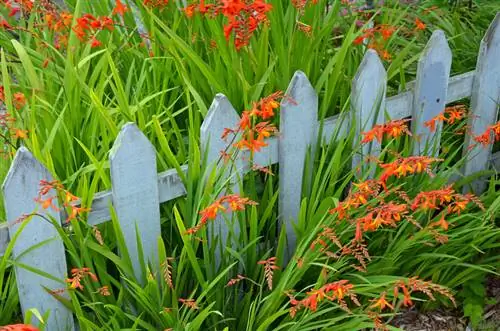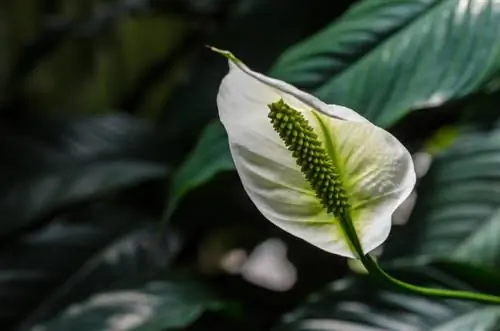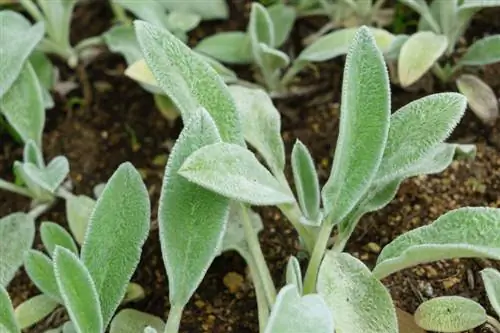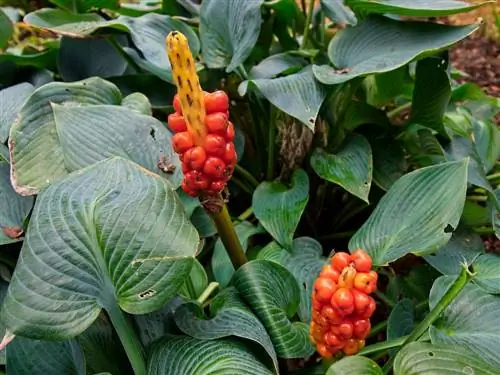- Author admin [email protected].
- Public 2023-12-16 16:46.
- Last modified 2025-01-23 11:20.
Montbretias are very popular flowering plants because they create attractive accents in the perennial bed with their beautifully shaped foliage and bright, exotic flower colors. Not only is caring for the Montbretie completely uncomplicated, you can also easily propagate it yourself.
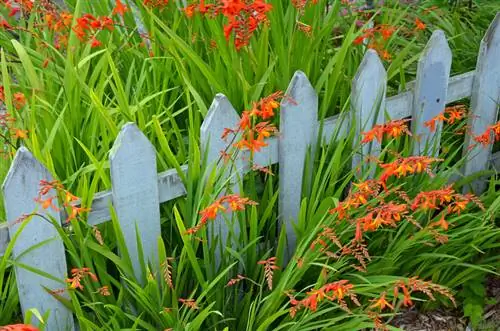
How can Montbretias be propagated?
Montbretias are best propagated by dividing the secondary tubers or sowing seeds. When dividing, the clumps are carefully divided and moved approximately every three years. Seeds should be harvested before frost and sown in seed pots from February.
Reproduction by division
The storage organs of the Montbretia form numerous secondary tubers, which grow into large clumps over the years. You should carefully dig them up and divide them about every three years. This is also important in order to keep the Montbretie flowering. As the Montbretia's stolons grow outwards and downwards, the plant becomes more and more lazy in the middle of the cane and mainly grows leaves there.
Since the heavily consuming Montbretias should be moved every three to four years anyway, this is a good opportunity to remove the small tubers and also use them in a new location. They continue to grow quickly there and often bloom in the same year.
Propagation by seeds
Sometimes Montbretias produce seeds that you can use for propagation. For this to be successful, you should definitely harvest the seeds before the first frost. The ideal sowing date is from February, as the germinated plants can then be moved outdoors in the same year.
Procedure:
- First let the seeds soak in lukewarm water for a few hours.
- During this time, fill the growing pots with special growing soil (€6.00 on Amazon), which is mixed with a little sand.
- Spread seeds and cover them with a very thin layer of substrate. Montbretia are light germinators!
- Use a sprayer to carefully moisten the soil so that the seeds are not washed away.
- Put a clear plastic bag over the pots to create a warm, humid greenhouse climate.
Place the pots in a bright, warm place and ventilate them daily to prevent the formation of mold and rot. It can take a few weeks for germination.
Tip
Montbretias also thrive in pots, as long as you give the plants a sufficiently large planter. With their tightly upright leaves and bright orange or red colored flowers, they are an attractive focal point for balcony or terrace greenery.

